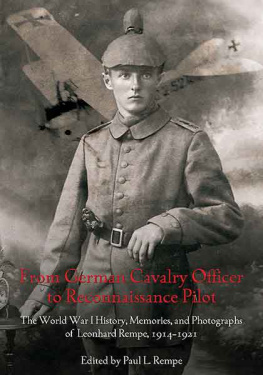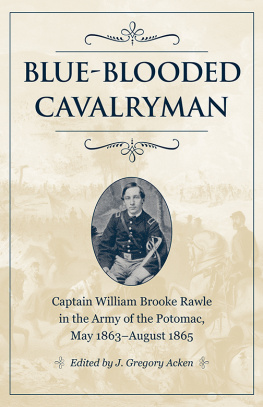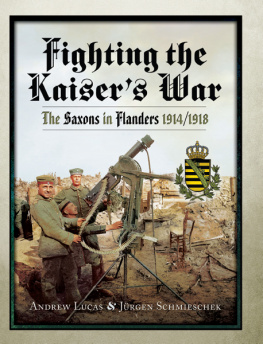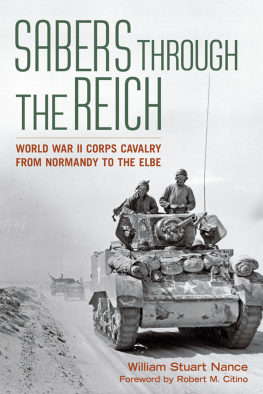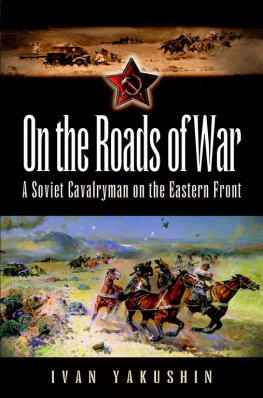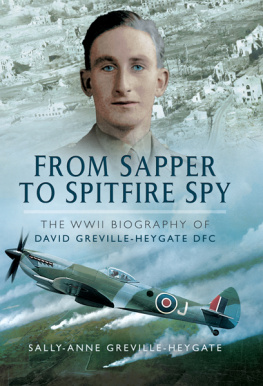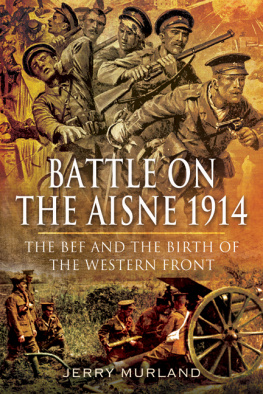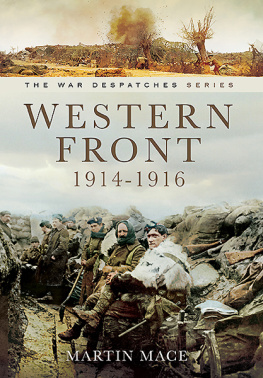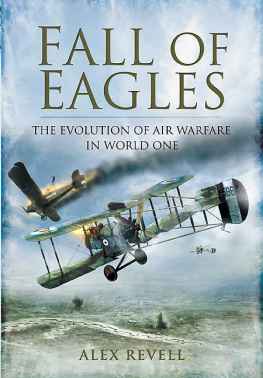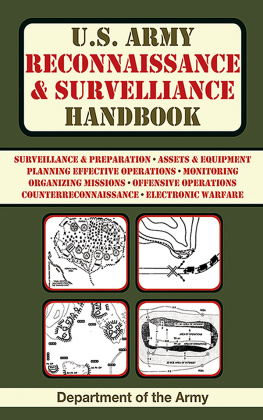Paul Rempe - From German Cavalry Officer to Reconnaissance Pilot: The World War I History, Memories, and Photographs of Leonhard Rempe, 1914-1921
Here you can read online Paul Rempe - From German Cavalry Officer to Reconnaissance Pilot: The World War I History, Memories, and Photographs of Leonhard Rempe, 1914-1921 full text of the book (entire story) in english for free. Download pdf and epub, get meaning, cover and reviews about this ebook. year: 2016, publisher: Savas Beatie, genre: Non-fiction. Description of the work, (preface) as well as reviews are available. Best literature library LitArk.com created for fans of good reading and offers a wide selection of genres:
Romance novel
Science fiction
Adventure
Detective
Science
History
Home and family
Prose
Art
Politics
Computer
Non-fiction
Religion
Business
Children
Humor
Choose a favorite category and find really read worthwhile books. Enjoy immersion in the world of imagination, feel the emotions of the characters or learn something new for yourself, make an fascinating discovery.
- Book:From German Cavalry Officer to Reconnaissance Pilot: The World War I History, Memories, and Photographs of Leonhard Rempe, 1914-1921
- Author:
- Publisher:Savas Beatie
- Genre:
- Year:2016
- Rating:3 / 5
- Favourites:Add to favourites
- Your mark:
From German Cavalry Officer to Reconnaissance Pilot: The World War I History, Memories, and Photographs of Leonhard Rempe, 1914-1921: summary, description and annotation
We offer to read an annotation, description, summary or preface (depends on what the author of the book "From German Cavalry Officer to Reconnaissance Pilot: The World War I History, Memories, and Photographs of Leonhard Rempe, 1914-1921" wrote himself). If you haven't found the necessary information about the book — write in the comments, we will try to find it.
Rempe initially served as a cavalryman in the 35th (1st West Prussian) Field Artillery of the XX Armee-Korps, fighting in several bloody and significant battles against the Russians on the Eastern Front. In 1916, he exchanged his spurs for the cockpit and transferred to the Western front. Flying specially built planes for reconnaissance work was dangerous duty, but Rempe relished his time in the open cockpits, flying at altitudes high and low to provide detailed intelligence information for the German army. He met and knew many of the pilots who flew in both fighter and reconnaissance planes, including Manfred von Richthoventhe Red Baron. Unlike so many of his fellow pilots, Rempe survived several crashes, and was shot down over Reims, France, in March of 1918.
At wars end, Rempe returned to a defeated Germany in the midst of turmoil and revolution and served briefly in a Freikorps (Free Corps) regiment dedicated to preserving the new government in Weimar against German Communists. Seeking a new beginning, he arrived at Ellis Island in the spring of 1923 to start his life as an American. He brought with him flight reports, other miscellaneous documents, and scores of remarkable photographs documenting his wartime service, most of which are published here for the first time. During 1956, the last year of his life, Rempe penned a brief memoir of his World War One service which, together with the photographic record, forms the basis of From German Cavalry Officer to Reconnaissance Pilot.
Using primary and secondary sources Dr. Paul Rempe provides insight into the grim realities of Leonhards war while his fathers own memoir recalls his special comradeship with his fellow soldiers and airmen. From German Cavalry Officer to Reconnaissance Pilot adds substantially to the growing literature of the First World War, and paints a unique and compelling portrait of a young German caught up in the deadly jaws of mass industrialized war.
Paul Rempe: author's other books
Who wrote From German Cavalry Officer to Reconnaissance Pilot: The World War I History, Memories, and Photographs of Leonhard Rempe, 1914-1921? Find out the surname, the name of the author of the book and a list of all author's works by series.

